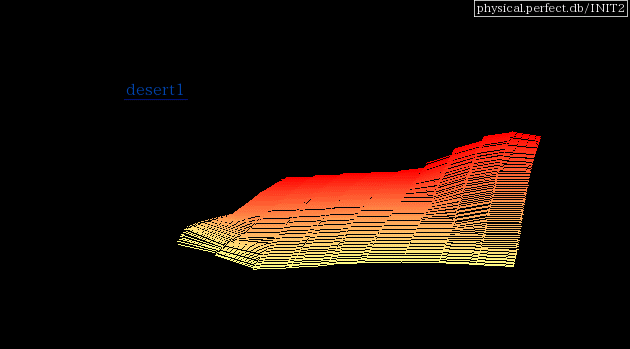Upcoming album will use videogame worlds instead of lyrics to tell its story

Perfect is not something its creator, Sean HTCH, would call a ‘game.’ In fact, he says it’s better described as software that has “elements of 2D exploration games, web browsers, music albums, and nonfiction interviews.” Ironically, the game’s name and its setting are almost at odds with each other. The world of Perfect is actually a city-sized building that was once a “big box warehouse store” known as “Perfect Mart;” think the natural progression from Target, to a Super Target, and so on.
In this imagined future, people live within Perfect Mart, and other buildings like it, because the outside world has been ruined by global warming. Seasons no longer progress and change the way they once did, and nature has ceased to produce food and other natural products of agriculture. That said, life inside the building is about as normal as can be, with the inevitable food shortage being solved by the combined uses of automation and science. People now work as “artists,” creating things like music and paintings, which are then used by “creators” that utilize machine learning algorithms to create machine-assisted art.

The player will explore the world of Perfect and come across Song Modules that, along with other background music, comprise the game’s album. And while listening to those songs, interviews related to them will appear in text form, not only adding more context and depth to each song, but also providing a better understanding of the game’s setting.
“to ‘ground’ the music in concrete world-building and thematic ideas”
A previous version of Perfect had the songs playing in a random order, but was ultimately removed in favor of letting the player discover the songs on their own; either by finding them in the world or triggering them when they enter a new area. For example, one song called ‘Exterior’ will play while in the exterior area of Perfect, with the accompanying interview being with the person in charge of maintaining that very space.
Ideally, players will interact with the game in the same way they do a website, i.e. clicking links to get from one page (in this case, an area) to another. Sean wants the game to be easy to experience, so those familiar with games and those not can enjoy it alike. But that then begs the question: Why even add game-elements like navigation to begin with if its implementation could be intimidating to some? “To help with the pacing of the music, and to contextualize the world,” HTCH explains. “This gives breathers between songs/interviews, and allows Perfect to provide a sort of mood context for each song.”

HTCH set out to make Perfect because he wants to offer a way to engage with music that’s different from simply playing an album, or listening to random songs on the radio. In those scenarios, it’s up to the song and its lyrics (if it has any) to convey a story or a message. Perfect’s goal, however, is to give context to music using narrative and visuals. “By being sort of controlling, overly structuring someone’s engagement with the album [through the use of the game’s interface], I think I can create a way of listening to music that has some of the interesting aspects that games have, while also being able to ‘ground’ the music in concrete world-building and thematic ideas.”
Development on Perfect began in February 2016, and about 10 songs have been worked on so far, with the full game to have between 20 and 30 tracks. You can listen to a few of the works-in-progress on HTCH’s SoundCloud page. Perfect is Sean’s fourth musical project, following the Anodyne (2013) OST, Model Minority No More, and his other in development game, Even the Ocean, which is currently set to release later this year.
You can find out more about Perfect on its website.



